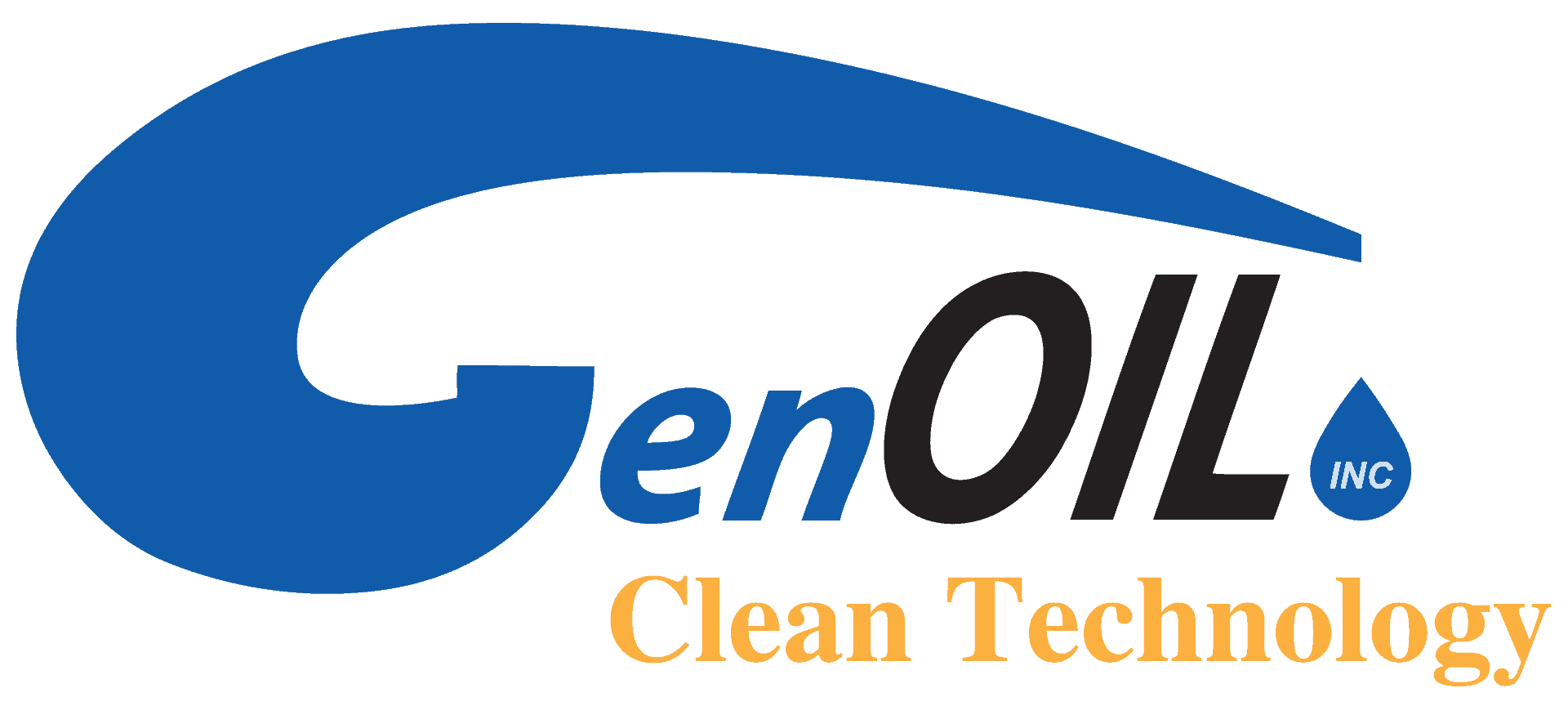Evaluation of Emerging Technologies for Heavy Oil Upgrading
From May 1998 to January 1999, Genoil researched and evaluated emerging technologies to determine their capabilities for the upgrading of heavy oil. The Genoil initial approach was to study the best parts of other existing technologies, gain an understanding of how each of the different technologies performed. Once it was understood which type of process would achieve the goals set by Genoil and following in-house research, process development and design improvements, Genoil developed a novel field upgrading process that represents a significant advance over current practices.
Genoil evaluated two separate and distinct technologies, previously developed to solve other problems in the oil industry. These technologies were the TaBoRR® process from the Western Research Institute in Laramie, WY, and the CAT process, which is typically used to make diesel fuel. GenOil spent considerable time and effort to test and analyze the technical results and economics of these processes. After a nine-month research and evaluation of these processes, it was concluded that a major shift in technical practices would be required to offer an economical, yet effective, process for heavy oil upgrading.
From a technical basis, it was defined that the CAT process would not be viable for upgrading heavy oils; therefore, bench-scale experiments were not conducted with this process.
Based on the technical merits of the TaBoRR® process (Tank Bottoms Recovery and Remediation), which is a carbon-rejection method (pyrolysis), bench-scale tests were performed using a heavy oil feedstock (12 ºAPI) to determine the potential yields and product quality. A liquid yield of 77.8 wt% was achieved with an average API gravity of 32.3º. Approximately, 13.9 wt% of the feedstock was converted to hydrocarbon gases, and the final 8.3 wt% of the original feed was produced as carbon-laden solids. However, detailed analyses indicated that a liquid yield of only 77.8 wt% limited the chances of an economic success. In addition, the liquid product was not stable (high olefin and diolefins content). Therefore, the TaBoRR® process was a technical success for cracking heavy oil, but had only a slim margin of commercialization, and would be viable only if the liquid yields could be increased.
Genoil GHU™ Process Development
In September 1998, Genoil decided to develop its own heavy oil upgrading process, based on a dual approach of visbreaking and hydroprocessing, and, therefore, by adding hydrogen mass, to obtain an increase in the liquid yields. A hydrogenation process should provide more than 100% of the fresh feed volume, instead of the 75-80% of the carbon rejection processes.
To start the conceptual and preliminary design work on a hydrotreating process to upgrade heavy crude oil, Genoil acquired the Visbreaking technology from the Eadie Group and the “Bullet” technology from the Acquasol Corporation. The Eadie Visbreaking technology was developed through extensive pilot plant work conducted in the early 1990’s at the Alberta Research Council. This Eadie Visbreaking technology was modified and enhanced by Genoil. The bullet technology is a proprietary mixing device, which maximizes the mass transfer between two fluids. Full dispersion of one fluid into the other fluid is achieved (“micro-molecular mixing”) through the bullet, together with the “super-saturation” of the gas into the liquid.
Based on these two technologies, Genoil started developing its own heavy oil upgrading process concept, with the primary goal of improving sufficiently the properties of the heavy oils to meet refinery or pipeline specifications, removing the need for a diluent for transportation.
Key features of the Genoil upgrading are the addition of the hydrogen to the feedstock, and the mixing of the hydrogen with the liquid feed. To confirm this concept, Genoil constructed a laboratory scale prototype vessel together with the appropriate mixing gas/liquid devices. Then, Genoil conducted bench scale tests, at various operating conditions over a period of months, on a Cold Lake Bitumen with an API gravity between 11 and 13º. The main criteria were to achieve high liquid yields and good product stability (no olefins or diolefins). The original Genoil targets were to upgrade the Cold Lake Bitumen from an 11-13º API gravity to an API gravity of 19-20º without a hydrotreating catalyst (hydrovisbreaking), to an API gravity of 22-24º with small amounts of catalyst, and to an API gravity of 28-30º with a hydrotreating reactor (hydroconversion).
These bench scale tests confirmed that “mild” hydrocracking (once-through partial conversion with hydrogen) of the heavy oil feedstock was the way to obtain stable products. Typical visbreaking (without hydrogen) would result in an API increase of only 2-3º and in unstable products. With hydrogen addition, not only the product API could be raised further, but also the product stability was improved. The bench scale tests indicated also that addition of hydrogen limited the condensation of asphaltenes, preventing the formation of coke, allowing higher conversion levels, and resulting in higher product stability together with some desulfurization of the products.
After testing of the proprietary mixing vessel and devices, the next phase of the program was to develop a computer model to test the Genoil concept. Over three months, several simulation studies were conducted to optimize the initial design concept. The simulation results enabled the updating of the process engineering and instrumentation diagram, complete with mass balances and heat balances.
